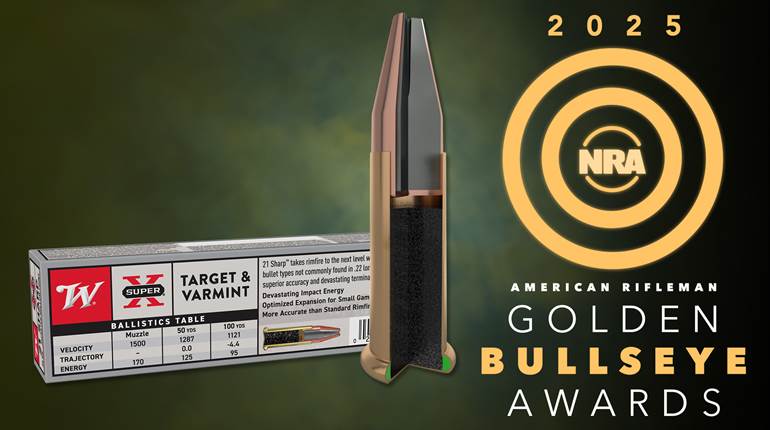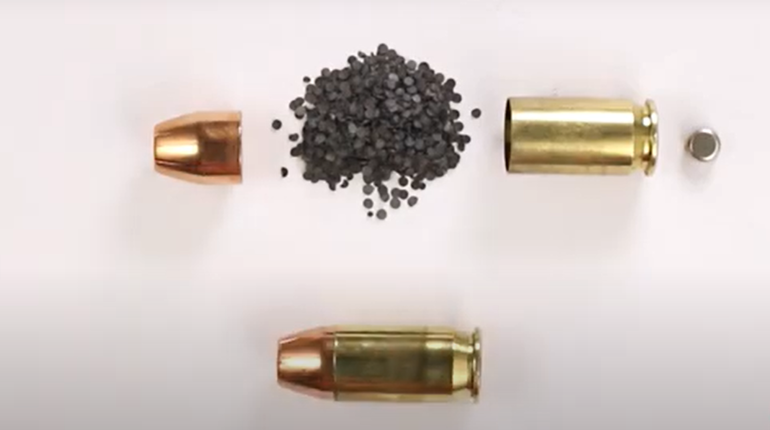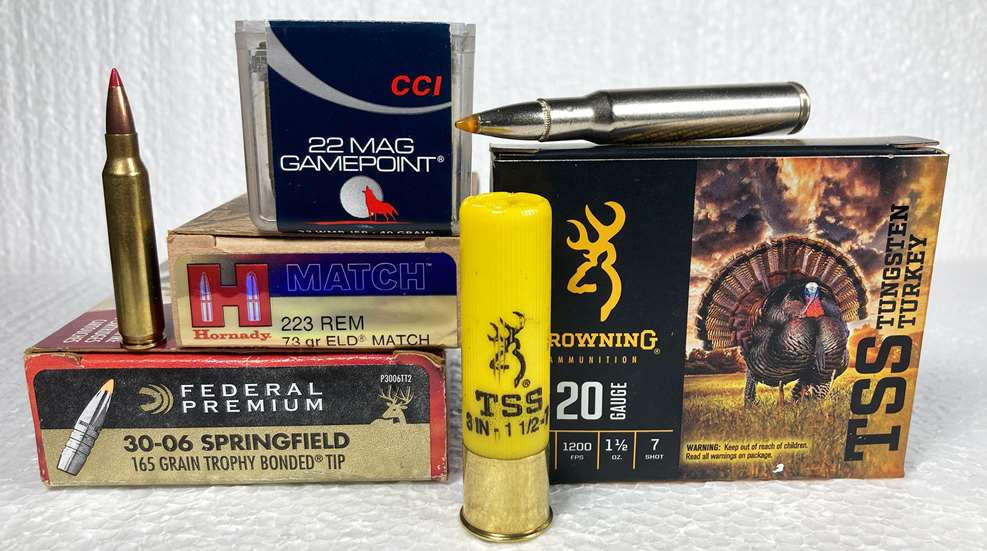
Shooters tend to disregard what happens between the chambering of a round and when the projectile(s) speed toward the target. That’s understandable because, after all, the entire firing sequence occurs in a fraction of a second. But, as the English writer and philosopher Aldous Huxley wrote, “The more you know, the more you see.”
Ammunition is a true modern marvel. Think about it: components—even those unseen in a loaded round—are carefully crafted and paired to ensure shooter safety, as well as provide absolute reliability and optimum performance, whether perforating paper or ringing steel at-distance, dusting a challenging clay or stopping a hell-bent Cape buffalo or armed assailant. It’s where science and sport meet.
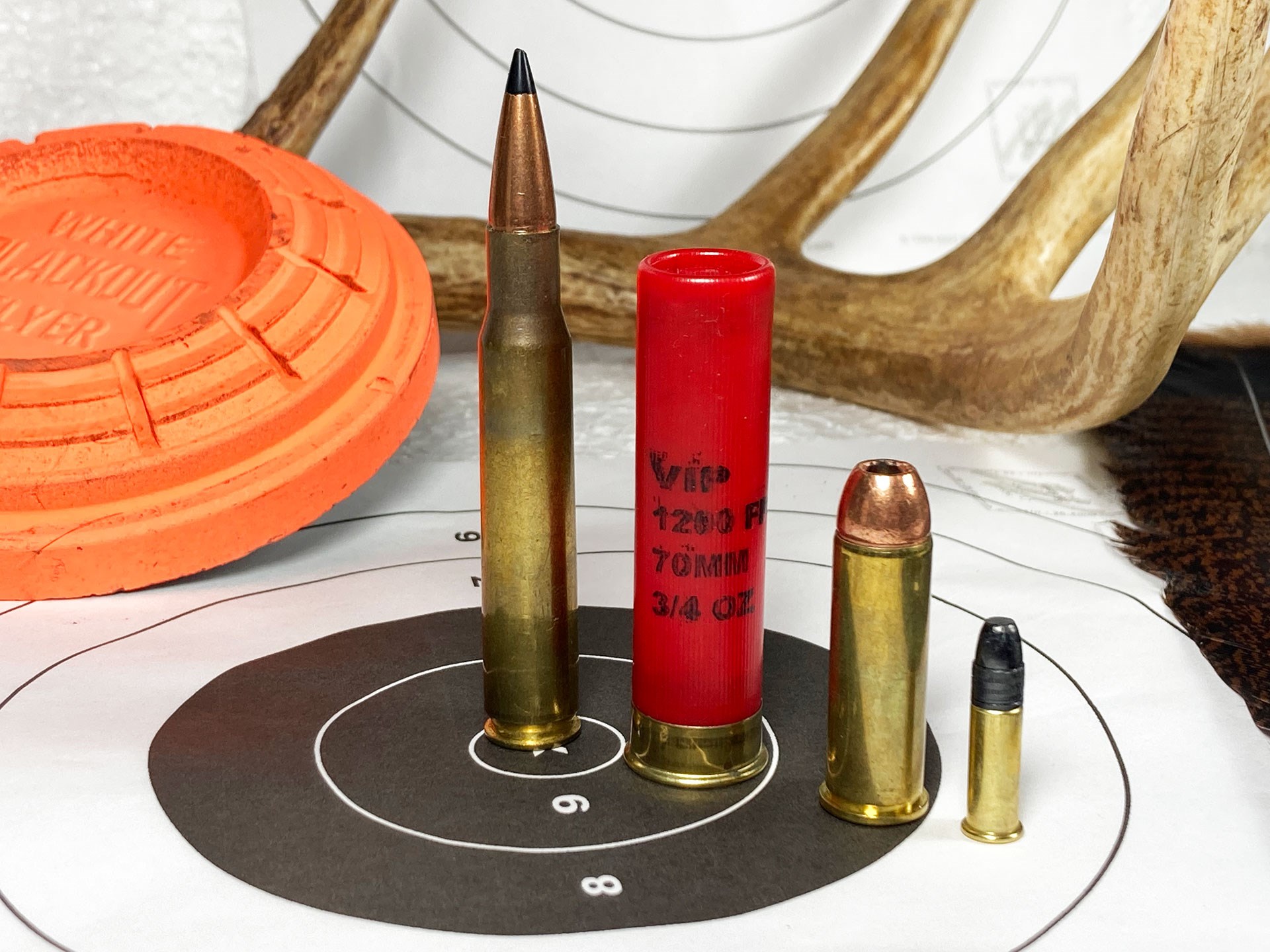
Metallic cartridges and shotshells share some of the basic components. These include the primer, propellant, case or “brass” (or hull for shells), and projectile(s). Shotshells also have a wad column, among other things. Let’s now examine each of the primary components to learn about them and their role once the trigger is pulled.
Primer
Just as the gasoline engine requires a spark plug to achieve ignition, so does the cartridge (or shell) need a heat source to initiate deflagration of the propellant. That is the purpose of the primer. Primers for center-fire metallic cartridges and shotshells differ in dimensions and construction but serve the same purpose.
According to the NRA Firearms Sourcebook, “The primer contains a very small amount of [non-corrosive, nowadays] explosive held inside a metal primer cap. In technical terms, when the firing pin strikers the primer cap, the priming mixture is crushed between the cap and anvil. This causes the priming mixture to explode, sending a stream of hot gases through the flash hole and into the cartridge case.” This will ignite the propellant.
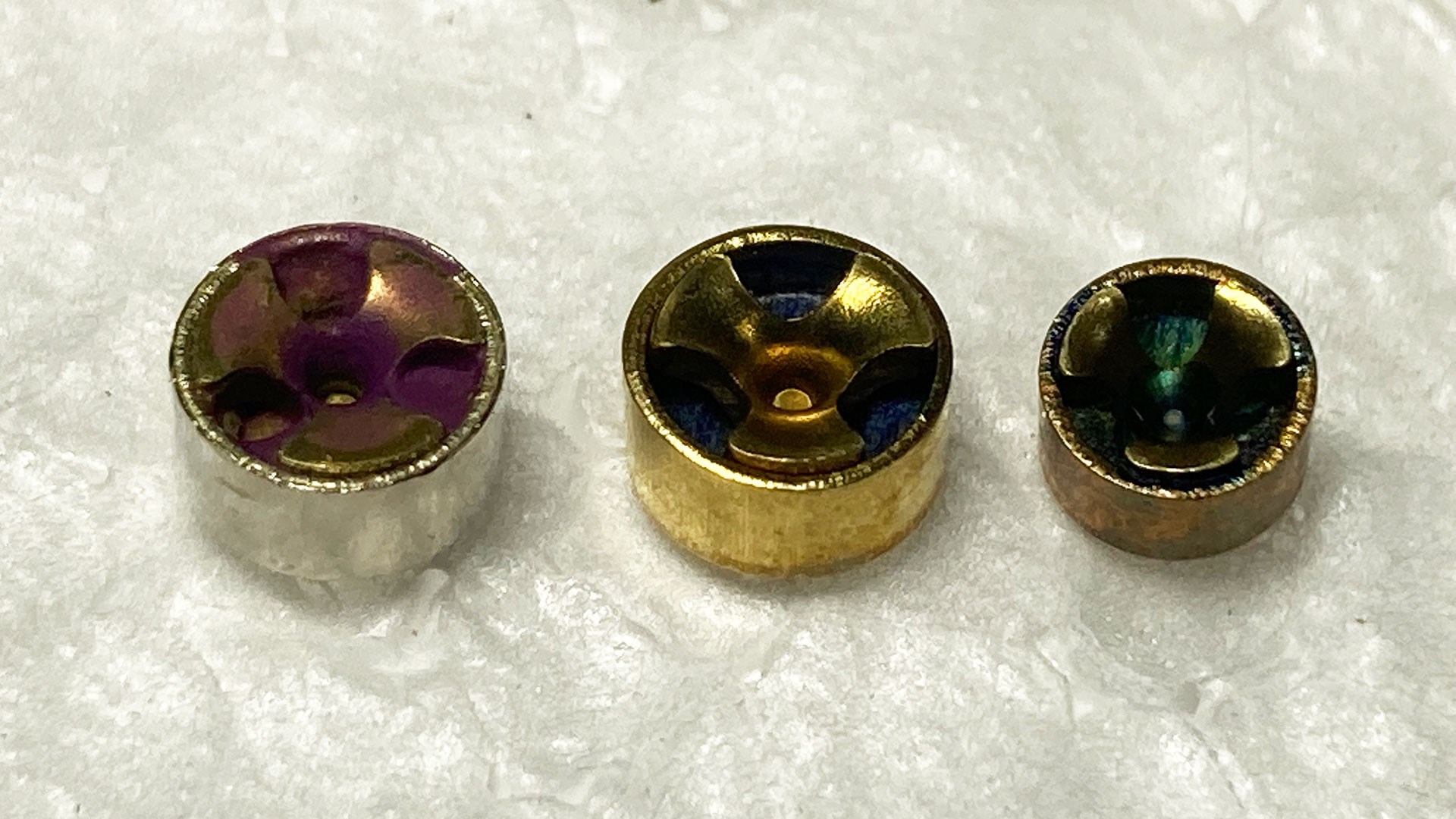
There are two types of primers for center-fire cartridges. Boxer primers, which are commonly used in American-made and some U.S.-destined imports of better quality, “consists of a three-part assembly containing a U-shaped metal cap, a metal anvil and the priming mixture,” states the NRA Firearms Sourcebook. Conversely, the Berdan primer, which is typically employed in economical—and usually steel-cased—foreign-made fodder, only has metal cap and priming mixture; the anvil is integral to the case. Economics is the reason for the latter design.
As for rimfire ammunition, the priming mixture (including a fractioning agent, which is usually ground glass) is contained within the rim. Crushing the rim causes the amalgam to ignite.
Center-fire primers are manufactured in different sizes, ranging from small rifle and pistol to large rifle and pistol. Additionally, there are “hotter” magnum primers, which are necessary to ignite large quantities of slow-burning propellants—especially in cold weather—and hearty charges of spherical-type propellants. Premium, “match”-grade ammunition frequently employs like-named primers, which offers improved consistency.
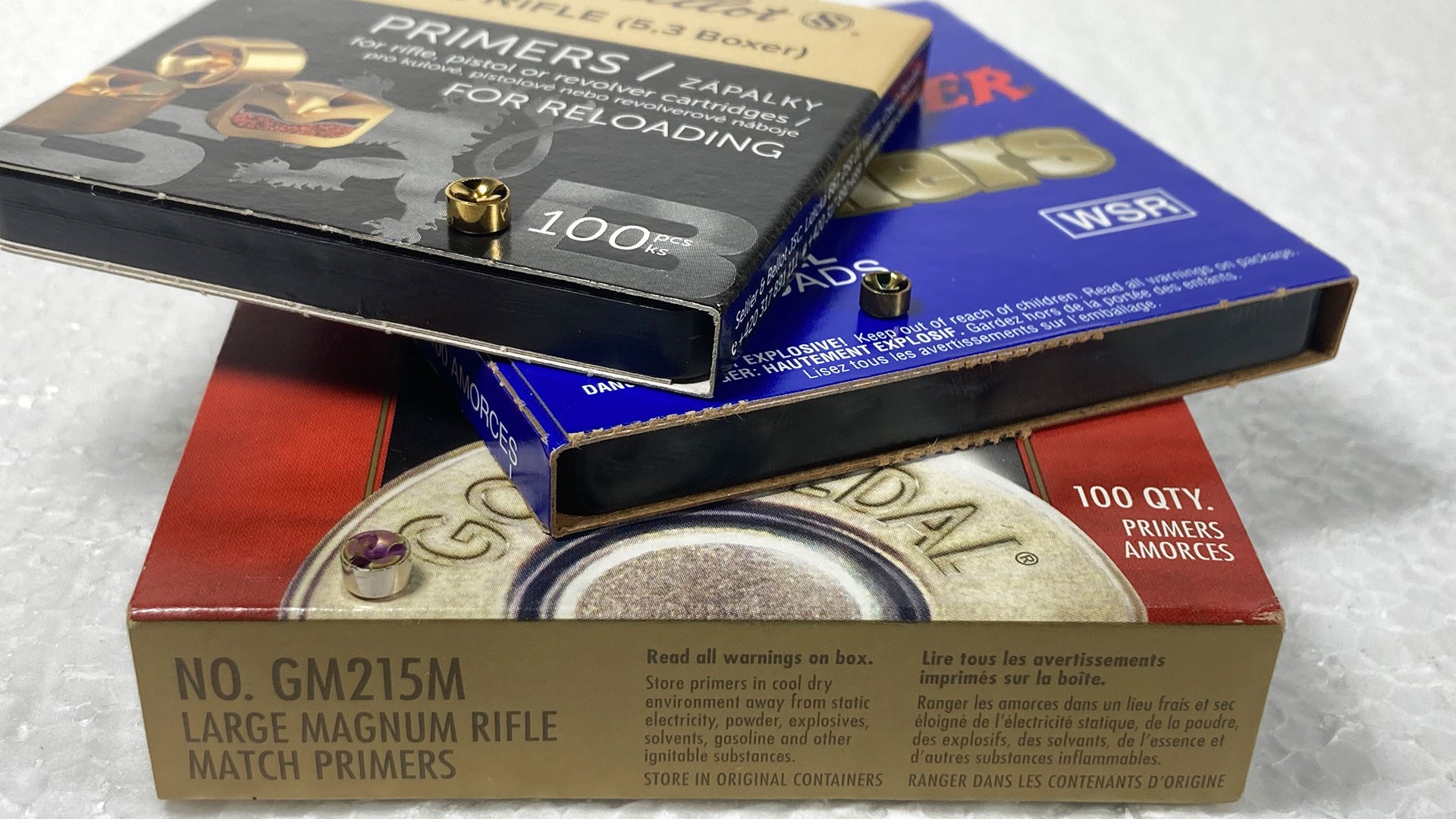
Shotshell primers are noticeably larger than their metallic-cartridge-destined Boxer counterparts but are similar in construction. The primer contains a cup, priming composition (mixture), and anvil, and there is a vent at the front.
Shotgun primers are unique in that, depending on manufacturer, the width can vary greatly. For instance, foreign-made shells typically employ the excellent Fiocchi Fio 616 or Cheddite CX-2000, both of which are slightly wider than their American 209 counterparts. This is a non-issue unless you’re handloading. Like metallic cartridges, shotshell primers are available in magnum configuration, but in factory ammunition you won’t know a difference.
Propellant
Modern “gunpowder,” or propellant, is not an explosive—as with blackpowder—but rather a fast-burning solid that stores chemical energy. Regarding the topic, the NRA Firearms Sourcebook states, “The rate of deflagration is what separates smokeless propellants from true explosives. An explosive may be defined as an energetic substance that deflagrates at velocities greater than 4000 f.p.s.” That’s significantly faster than smokeless propellants. Still, the rate as which it’s consumed makes shooters believe that it explodes—it doesn’t.
As for composition, “The main feed stock of smokeless powder is nitrocellulose obtained from either wood (good) or cotton (best),” states the manual. Within smokeless propellants are found three designs—single-, double-, and triple-base—though only single- and double-base propellants are normally used in small arms ammunition. The difference between the two is the addition of nitroglycerin in the latter. The best one for the task will be selected.
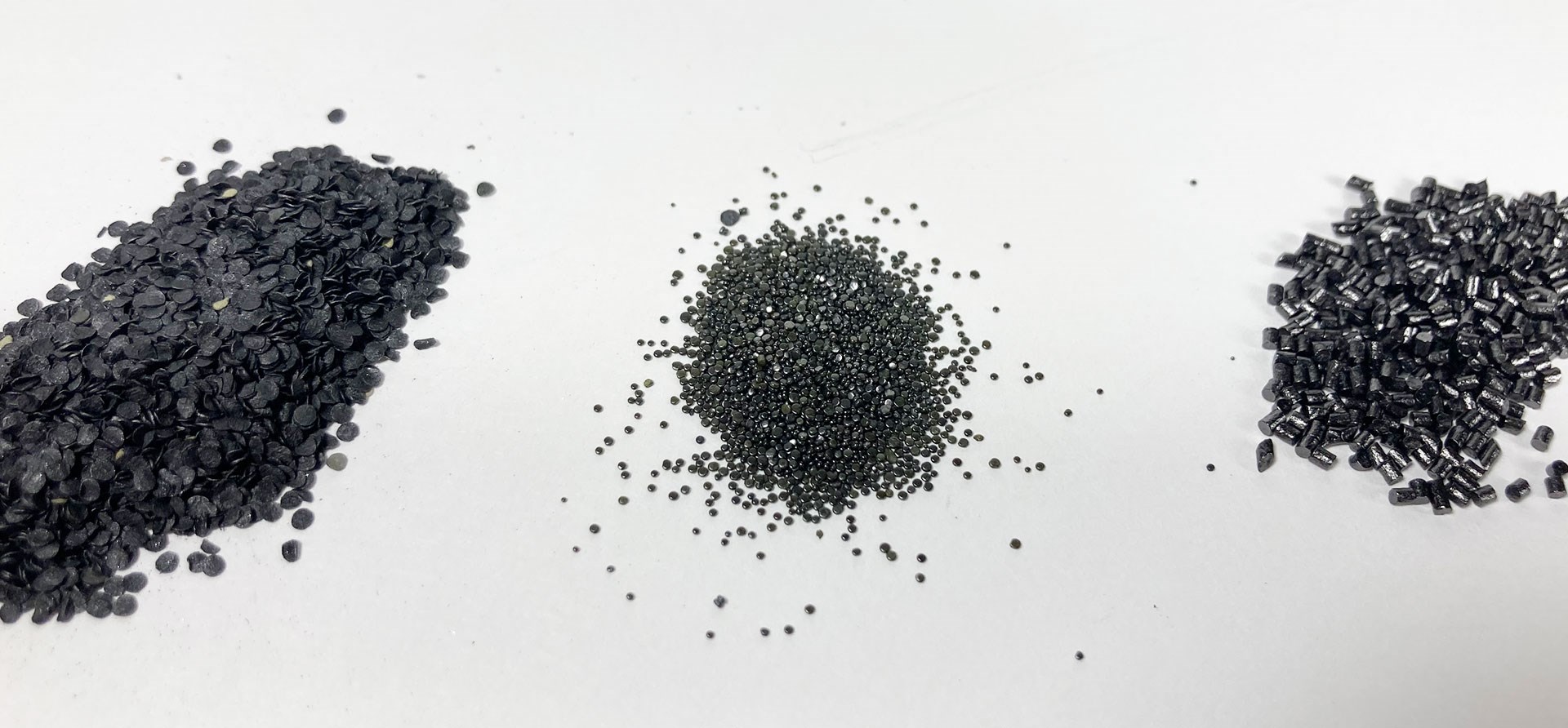
In addition to the base ingredients, other chemicals/ingredients may be added. Among these are: de-coppering agents; flash inhibitors (especially for defensive ammunition to preserve vision in low light); stabilizers; and anti-static coatings. There are also deterrent coatings that, along with granule size and shape, serve to control the burn rate of the propellant and influence the pressure/curve. Concerning shape, propellants can be found in extruded (stick), spherical/ball, and flake form. Outside of the sub gauges, seldom is anything other than flake propellants used in shotshells. The former two are primarily used in metallic cartridges.
Which propellant works best for your cartridge-bullet combination will be loaded in the cartridge or shell you’re holding. Believe me, there’s a lot more than meets the eye.
Cases/Hulls
Cases (rifle and handgun) and hulls (shotshells) are more than holders for the assorted components. Yes, they keep everything situated in a compact, easy to transport and use unit; however, their designs and materials are important to safety and performance. That’s because the case/hull must be able to withstand high pressures, as well as be able to be easily extracted. They must economical, too.
The expensive component in most ammunition is the case—and for good reason. Typically made from brass (83 percent copper and 17 percent zinc), the case must withstand pressures upward of 65,000 p.s.i. and yet have enough spring-back for easy extraction. Steel, aluminum, polymer, and combinations thereof are also used to make cases, but each has its advantages and drawbacks. Typically, all-steel or -aluminum cases are employed in the manufacture of economical loads, as seldom do these shooters reload, and so reload potential and longevity are unimportant.
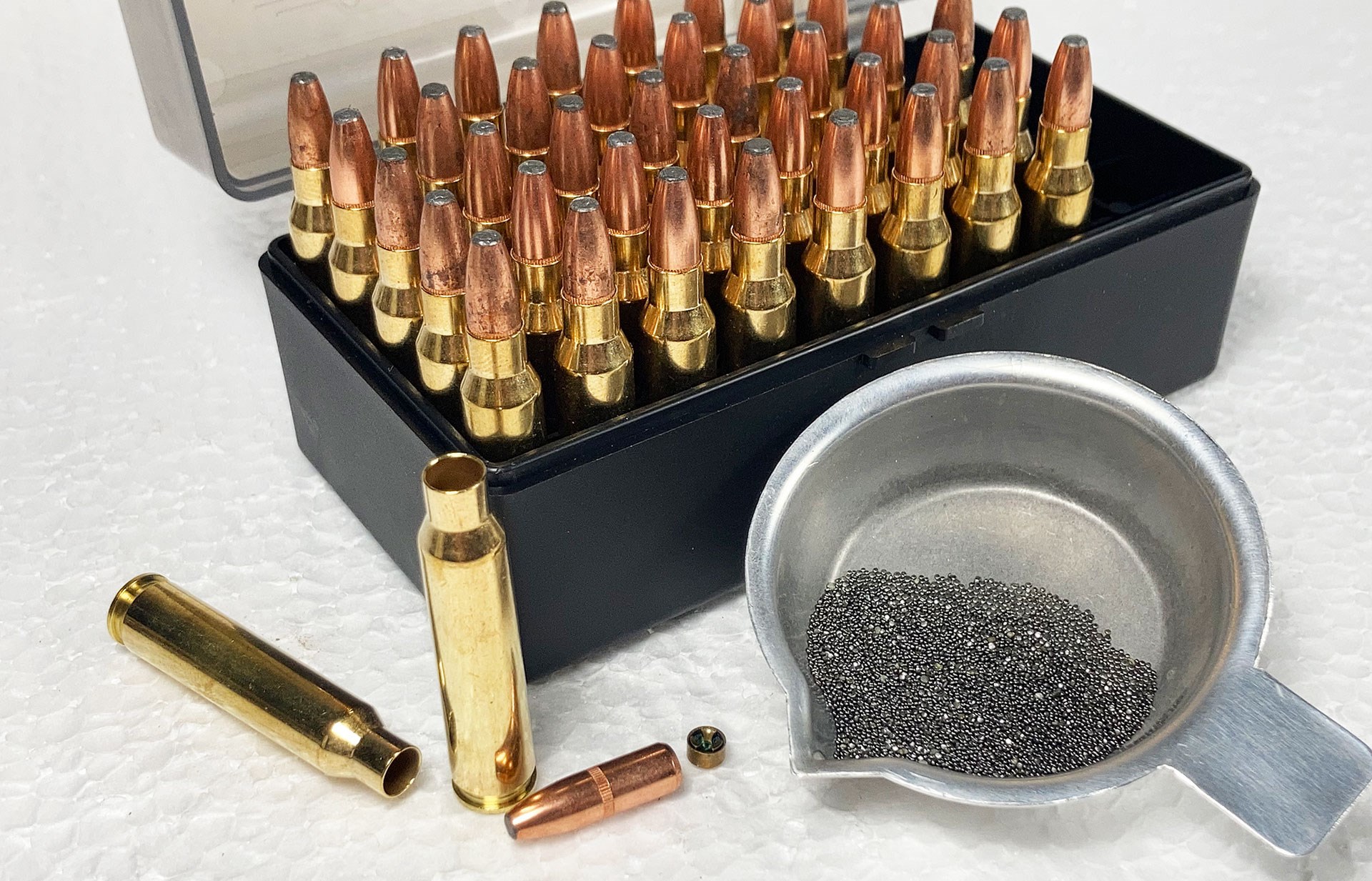
Of the case-making materials, brass is still the best all-around option. Why? It is strong, easy to form into cartridge cases, readily available, can be annealed or hardened, requires no anti-corrosive coatings and is inexpensive. Moreover, it’s also easy to return it to its original dimensions via dies for reloading. Though heavier than some other case-making materials, such is a moot point for most shooters.
Depending on the cartridge, the case may be bottle-necked, tapered or straight walled, as well as have a rim, semi-rim, rimless, rebated rim, or belted design. Brass’ flexibility makes it easy to create these designs.
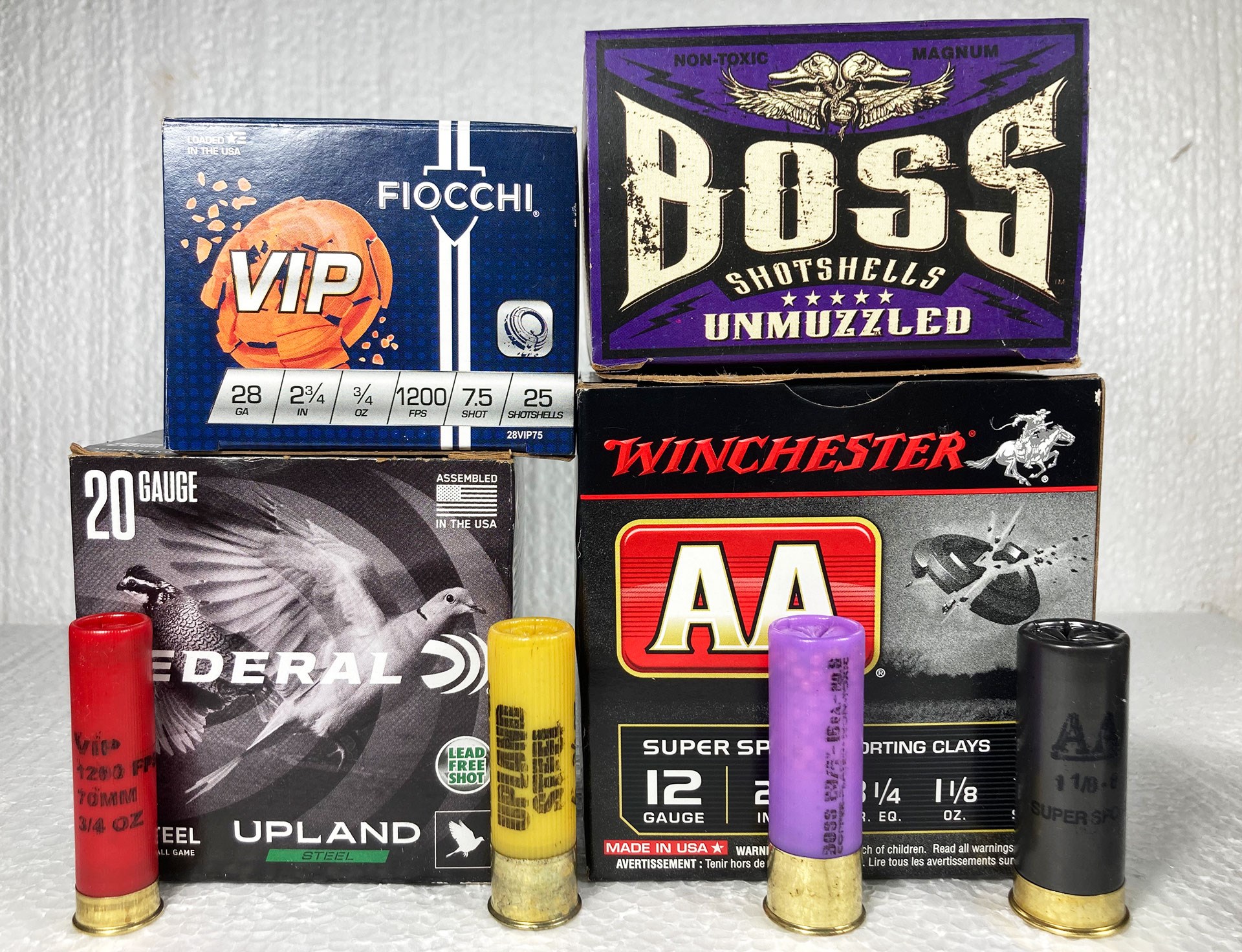
Unlike metallic cartridges, shotshells are almost exclusively manufactured using a plastic hull with a base wad (paper or plastic, and the latter can be integral), with metal head made from brass or steel washed with brass or similar. Whereas brass and paper hulls were once the material of choice, such is no longer the case. Sure, paper can be had, but the drawbacks are increased cost, limited availability, and, once exposed to moisture, swelling—a bad thing for repeating shotguns. Plastic is plenty durable for the modest pressures, and its smoothness (for cycling) and resistance to moisture make it a good choice. It’s also inexpensive.
Usually, shotshell hulls are color-coded to represent the gauge, though this isn’t always practiced. Always confirm the gauge on the metal head. As for the mouth, the hull can be closed with a six- or eight-fold crimp or roll crimp. In general, six-fold crimps are more prevalent in sub-gauges, which have less crimping material, as well as hunting loads. Ultimately, it makes little difference which crimp is employed, so long as it’s solid for reliable ignition. Roll crimps are rarely used nowadays outside of slugs and a minority of turkey loads.
Wad
Whereas metallic cartridges only have the bullet residing atop the propellant, such is not the case with shotshells. At a minimum, between the propellant and payload will be found fiber over-powder wads to contain the propellant gases. Most modern shotshells, however, feature an economical and durable plastic wad. Interestingly, fiber-type wads are slowly staging a resurgence due to residual buildup of plastic in the environment—especially on public ranges. Biodegradable wads have been developed as well.
The rear of the wad has a concave surface—sometimes with projections to strategically intersperse the propellant—that flares to contain propellant gases—even in overbore barrels. Outside of some specialty loads—i.e. steel, tungsten, and turkey, to name a few—most wads will have a cushion section that, during the firing sequence, serves to protect the shot from the gases, cushion the shot from the forces of acceleration, and influence the pressure curve. Between the shot cup, which resides atop the cushion section on some wads, and gas seal, the length of the wad is important in that it must take up the appropriate amount of space within the hull to ensure a secure crimp.
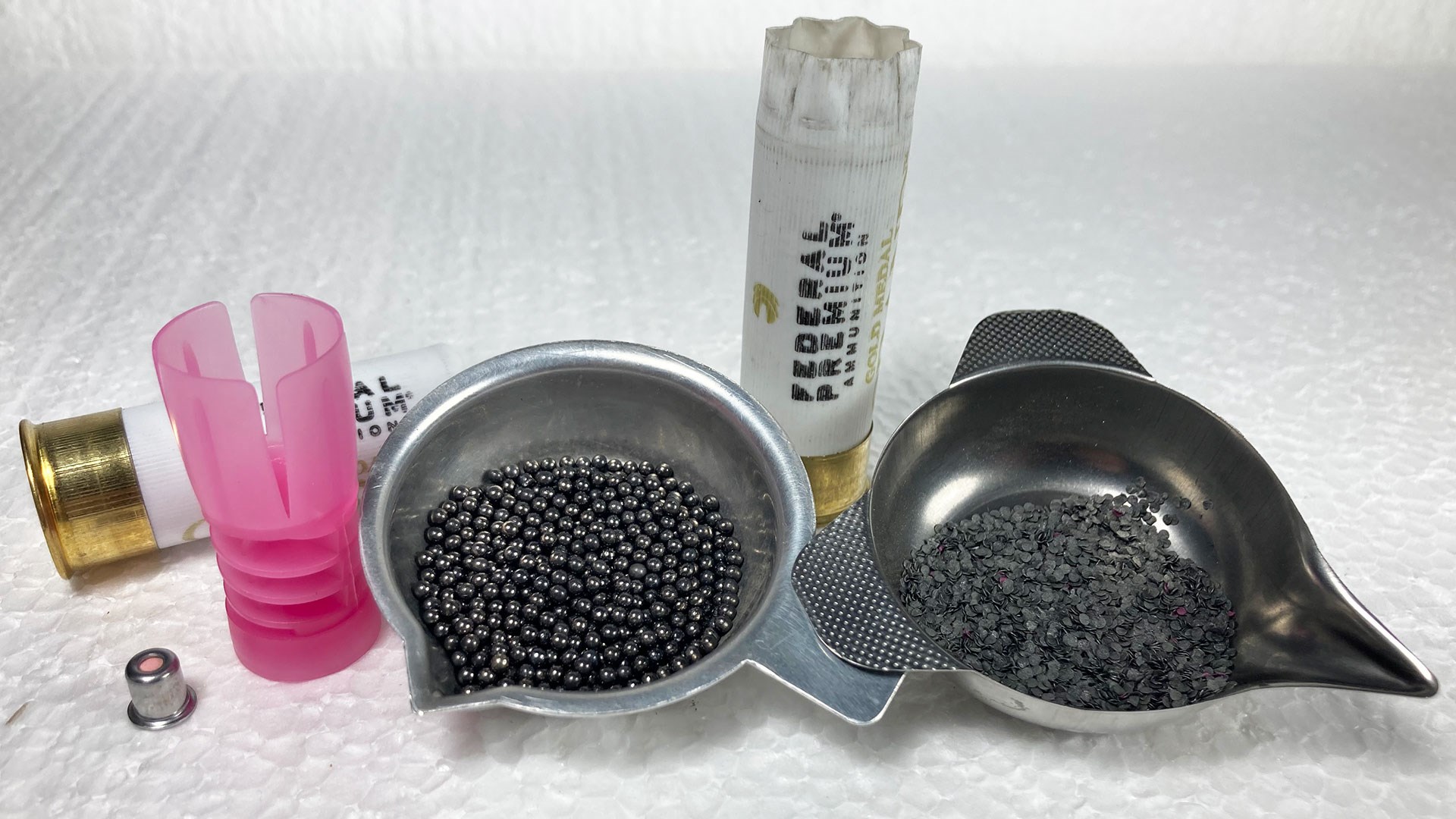
As its name suggests, the shot cup is the portion of the wad that contains the shot. In a proper, balanced load, the shot will be level with the top of the shot cup or, when bismuth, lead, or other “soft” metal is used, can be over; however, that doesn’t hold true for all pellet-making materials. Why? The shot cup not only carries the shot and protects it from the barrel, but it also protects the barrel from the effects of the shot—especially in the case of pellet-making materials that are harder than the barrel steel and can damage it.
Lastly, wads can have as few as two slits and as many as eight. The number and length of slits (and thus petals) will influence the patterns; fewer, shorter slits create tighter patterns, while the opposite is true. There are atypical designs, such as the Federal FLITECONTROL FLEX and Hornady Versatite wads, that use slits, side petals, and the flaring gas seal to slow the wad’s progression and create extra tight patterns. Tighter patterns can also be achieved by using wads with thicker petals, which adds to the constriction of the choke. Nonetheless, the wad will begin to slow once exiting the muzzle and releasing the payload—be it shot, buckshot, or slug.
Projectile(s)
Most rifle and handgun cartridges fire a single projectile, though they can be preprogrammed to strategically break apart upon impact increase the terminal effect. More on that shortly. During the firing sequence, the deflagrating propellant creates sufficient pressure to force the bullet from its at-rest position, though the propellant will likely continue to burn well after the bullet has left the case, causing it to achieve higher velocities; that’s why magnum cartridge need longer barrel lengths to attain top velocities with most propellants.
As for rifle and handgun bullets, a book unto itself could be written about the topic—and certainly has. Frankly, it’s too much to cover here, but I will provide a synopsis.
First, know that if there’s a need for it, there’s likely a bullet designed for the task. Non-expanding, full-metal jacket bullets are great for punching paper and ringing steel but inappropriate for game animals, save for pelt-hunting. When hunting, a bullet designed for the game pursued—and legal—must be selected; anything less is unethical. Outside of those for dangerous game, hunting bullets need to expand via a polymer-tip-topped hollow cavity, hollow-point, or exposed lead. That is, unless you’re using the Lehigh Defense Xtreme Penetrator or similar designs, which achieve top terminal ballistics without expansion; however, you must confirm the legality in your state.
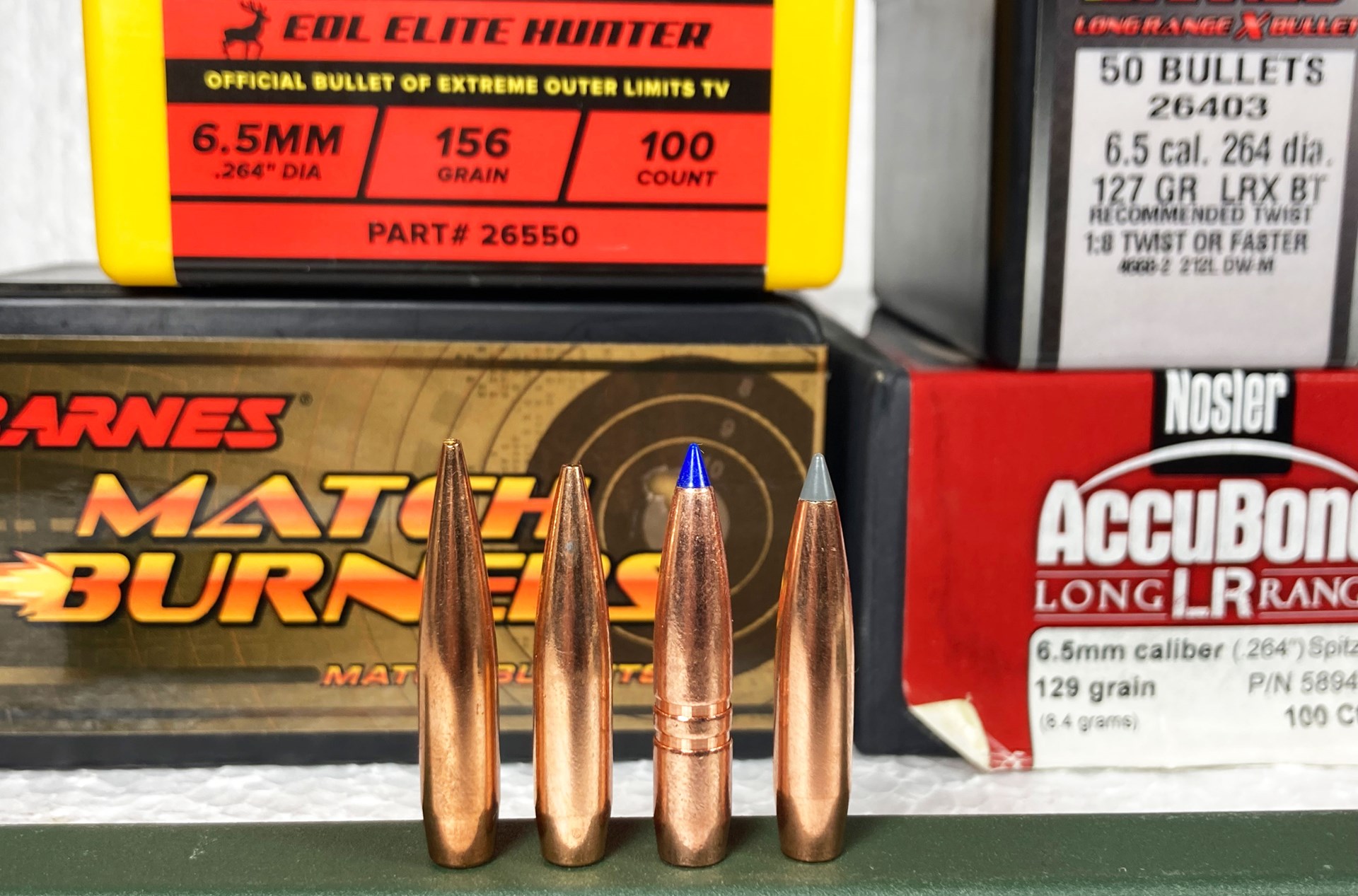
In general, bullets for lighter, thin-skinned game, such as deer and black bear, need not retain as much of their original weight as those employed on muscular, heavy boned species, including elk, eland, and moose, where it will need to penetrate deep to reach the vital organs. Companies are good about providing recommendations on their boxes—use them. The same applies to defensive ammunition. Choose defense-specific ammo for carry.
Before making a selection, ensure that the bullet-making material employed is permitted on the range you’re at or where you’re hunting, as lead isn’t allowed everywhere. Fortunately, there are excellent bullets made from brass, copper, and gilding metal (copper-tin) from an increasing number of companies.
As for shotshells, when fired the wad(s) and projectile(s) will easily force open the crimp, exit the hull, and then traverse the length of the bore together before the wad separates from the payload and falls nearby. Meanwhile, the projectile(s) will continue toward their target.
Shotshells can be loaded with a single projectile (slug), buckshot (a small number of large pellets—0000 to No. 4), or payload (varying) of birdshot, which can be as small as No. 12 shot. When reading the box, remember that the larger the shot number, the smaller the shot size (i.e. No. 9 is smaller than No. 6). Most target and hunting loads for non-migratory species are made from chilled (low-antimony) or magnum (high-antimony) lead shot.
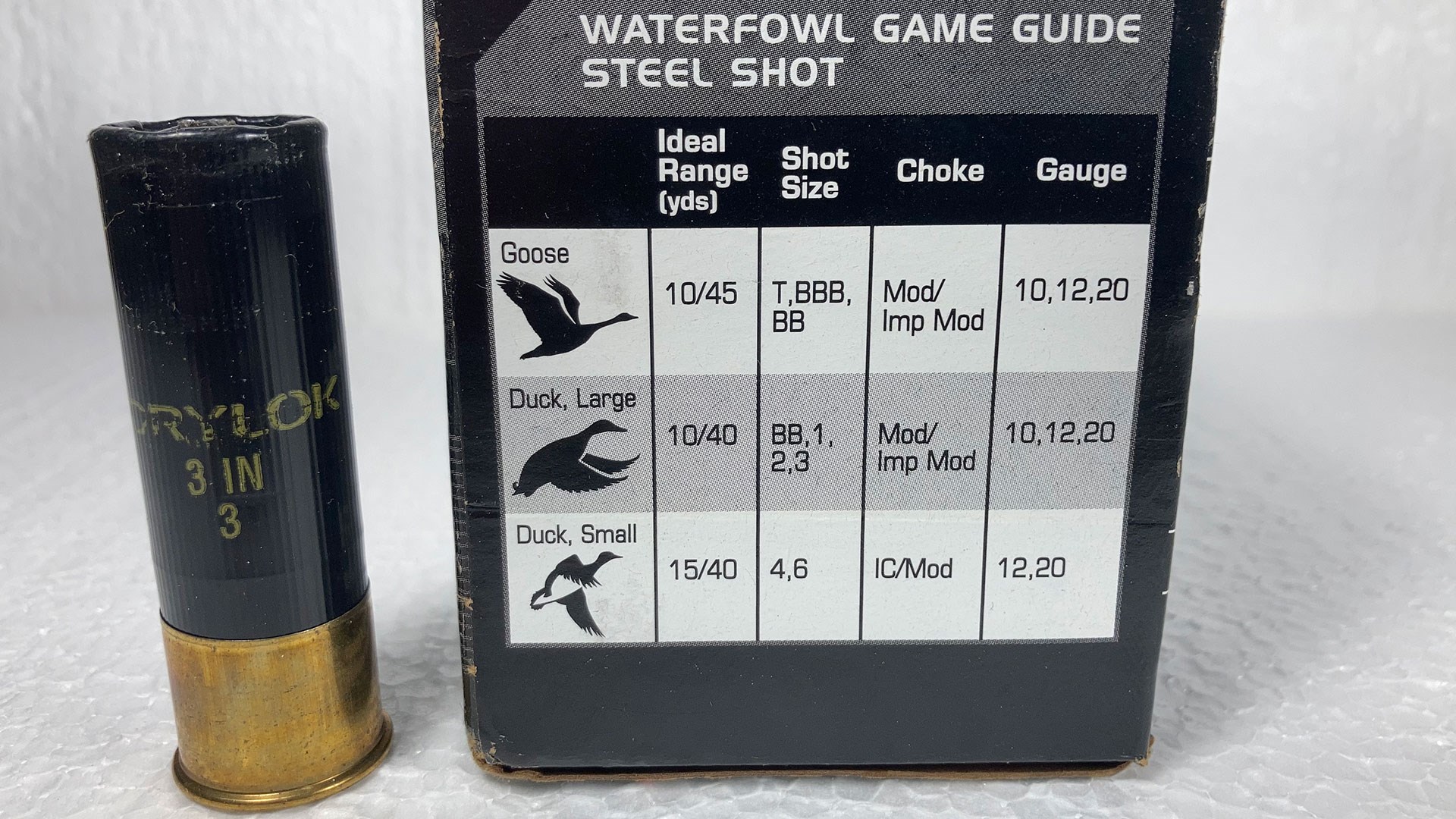
The former is less expensive, heavier and better transmits its energy on-target, but the latter patterns better at distance and penetrates deeper. For competition and upland hunting, I generally select magnum shot. Lead shot can also be plated with copper or nickel to further improve patterns and penetration.
When needing leadless options, there is a handful of combinations from which to choose, including steel, bismuth, tungsten, etc. Steel is the least costly but due to its low density and thus lighter weight, for a given shot size, it’s the least effective on game. Bismuth is approaching the density of lead, and some tungsten-based shot exceeds it greatly. Those offer the greatest downrange effect but come at a significant cost. Again, the suggestions offered by manufacturers are sound when making decisions and will help you from choosing the wrong shells for the task.
Modern ammunition is a true marvel. From a handful of components comes a seemingly instantaneous chain of events that bag dinner, win a tournament, save your life or simply bring a smile to your face.












